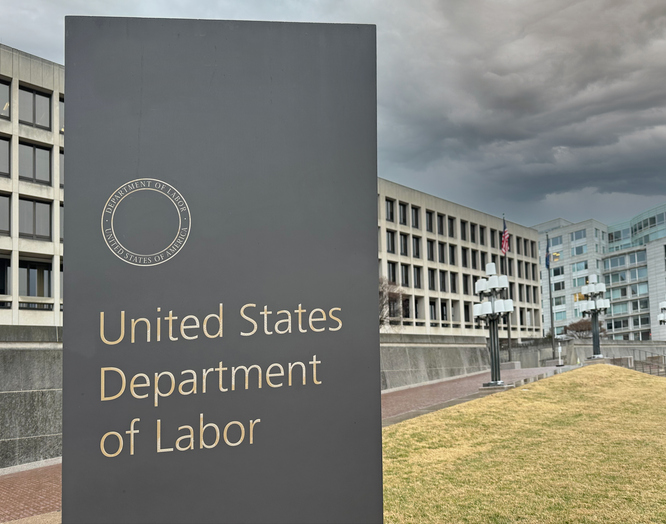The U.S. Department of Labor (“DOL”) published a final rule (the “Final Rule”) in January of this year, which took effect March 11, 2024, and changed how the DOL analyzes whether a worker is properly classified as an employee or independent contractor under the Fair Labor Standards Act (“FLSA”).
Employers that misclassify individuals as independent contractors may be liable under the FLSA for double the amount of minimum wages and overtime pay owed for time worked in the preceding three years, plus attorneys’ fees. Both employers and executives may face civil and criminal penalties for FLSA violations, which is an area of intense focus by the DOL. So what should companies know when determining how to classify a worker in light of the Final Rule?
Background
The FLSA itself does not indicate how to determine whether a worker is properly a contractor or employee. Therefore, before the DOL issued any formal guidance, courts across the country developed versions of the “economic reality test” focusing on the parties’ relationship, though there was variation as to the number of factors considered and how the factors are framed. These varying tests led to disparate results under the same or similar circumstances, causing great uncertainty for employers with workers in multiple jurisdictions.
In an effort to promote consistency, on January 7, 2021, the Trump-era DOL issued its rule for independent contractor status analysis under the FLSA (the “Prior Rule”). The Prior Rule encompassed a five-factor economic realities test, but heavily weighted two “core” factors: “the nature and degree of the individual’s control over the work” and “the individual’s opportunity for profit or loss.” If these factors pointed to the same conclusion, the DOL’s inquiry would end there.
The effective date of the Prior Rule was slated for March 8, 2021. After the Biden Administration took office, however, the DOL published a new rule on March 4, 2021, delaying the effective date of the Trump-era Prior Rule. Then, the DOL published a rule attempting to withdraw the Prior Rule altogether. In March 2022, a Texas federal court determined the DOL failed to provide a sufficient comment period and impermissibly failed to consider alternatives when it withdrew the Prior Rule. Therefore, the court enacted the Prior Rule retroactive to its original effective date, i.e., March 8, 2021.
The Final Rule
Once enacted, the Final Rule officially rescinded and replaced the Prior Rule. Instead of using the “core factors” set forth in the Prior Rule, the Final Rule returns to a totality-of-the-circumstances, economic reality test in which all of the following factors are equally considered:
- the worker’s opportunity for profit or loss;
- whether any investments by a worker are capital or entrepreneurial in nature;
- the permanency of the work relationship;
- the nature and degree of the employer’s control over key aspects of the performance of the individual’s work;
- whether the work performed is an integral part of the employer’s business; and
- whether the worker uses specialized skills and business-like initiative to perform the work.
Because the FLSA’s text does not proscribe how to assess a worker’s proper classification, courts are apt to apply Chevron deference—which requires a court to abide by an agency’s reasonable interpretation of an ambiguous statute—to the DOL’s Final Rule.
Impact to Employers
Under the Final Rule, a worker is an independent contractor as opposed to an employee under the FLSA if the worker is, in economic reality, in business for themself.
One practical consideration is whether the individual is working as a business—including doing business under an established business entity, such as an LLC or corporation; maintaining business licenses to perform their trade; and engaging in marketing, advertising, or other efforts to secure more work.
There are also ways to structure the business relationship to make it less likely the worker will be deemed an employee, such as:
- allowing the worker to determine or to meaningfully negotiate the charge or fees for the work provided;
- permitting the worker to accept or decline jobs or, where feasible, choose the order and/or time in which the jobs are performed;
- providing an express duration for the relationship, limited either by time or project completion; and
- expressly stating in the contract that the relationship is non-exclusive.
The Final Rule does, however, specify that requiring the individual to comply with specific legal obligations, satisfy health and safety standards, carry insurance, meet contractually agreed-upon deadlines or quality control standards, or satisfy other similar terms that are typical of contractual relationships between businesses, would not indicate an employee relationship for purposes of the DOL’s analysis.
Of note, the Final Rule only applies to FLSA determinations, meaning employee classification for purposes such as workers’ compensation and unemployment insurance, Form I-9 compliance, and entitlement to benefits under applicable federal and state laws such as the Family and Medical Leave Act (FMLA) and the Uniformed Services Employment and Reemployment Rights Act (USERRA) are unaffected.
Conclusion
With the enactment of the Final Rule, the DOL’s determination of a worker’s status is realigned more closely to longstanding judicial precedent, making consistent enforcement more likely in the years to come.
Holly H. Williamson is a partner with Hunton Andrews Kurth LLP in Houston, TX. She can be reached at hwilliamson@HuntonAK.com.
Theanna Bezney is an associate with the firm in Dallas, TX. She can be reached at tbezney@HuntonAK.com.

